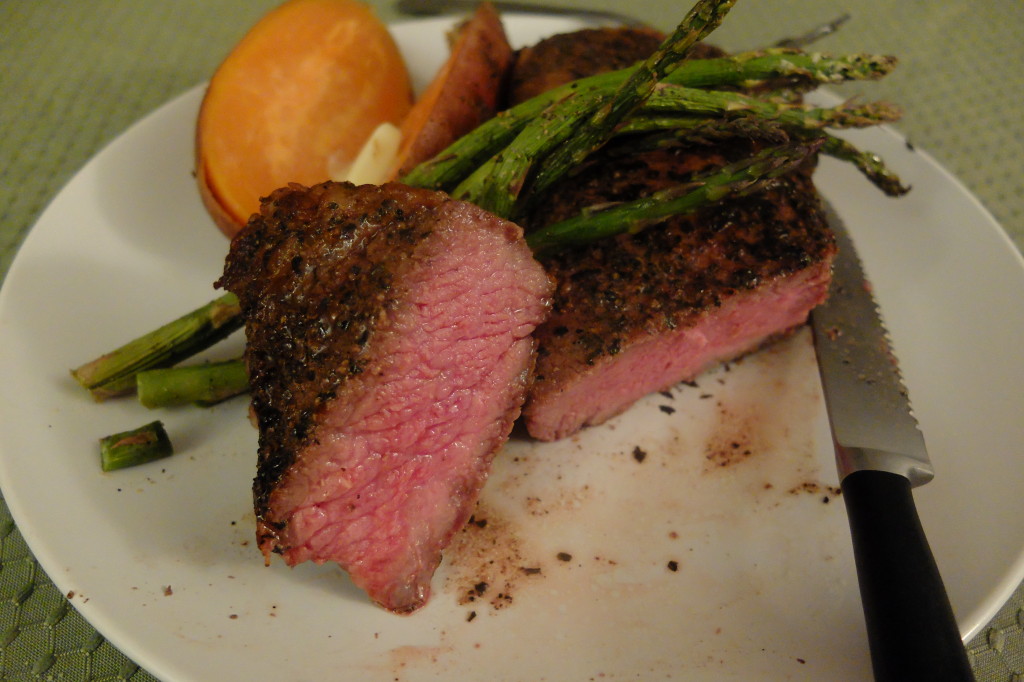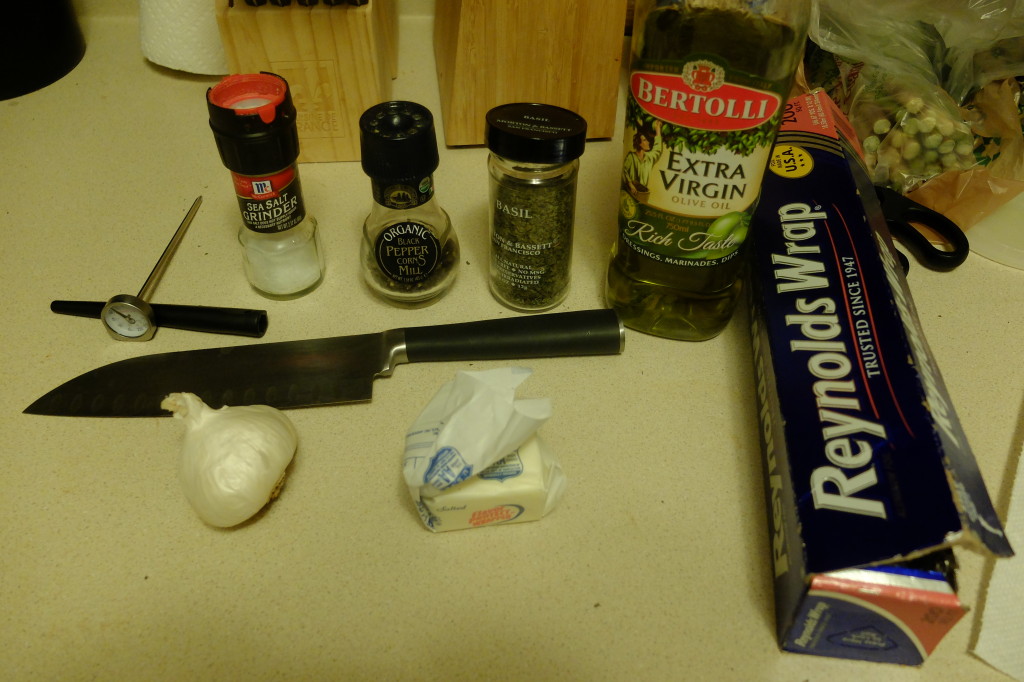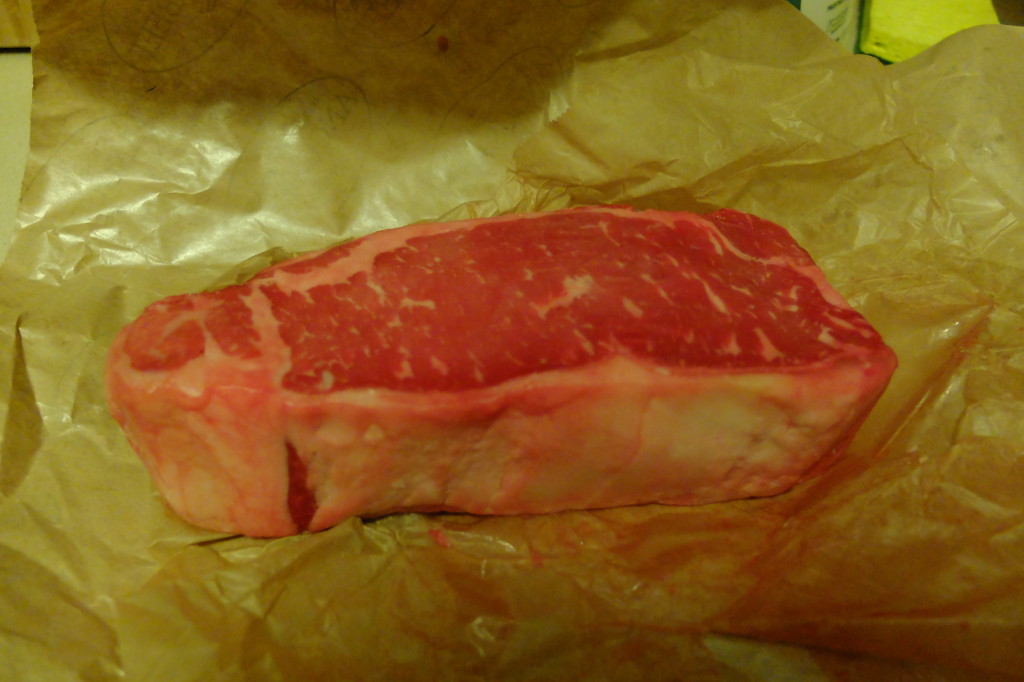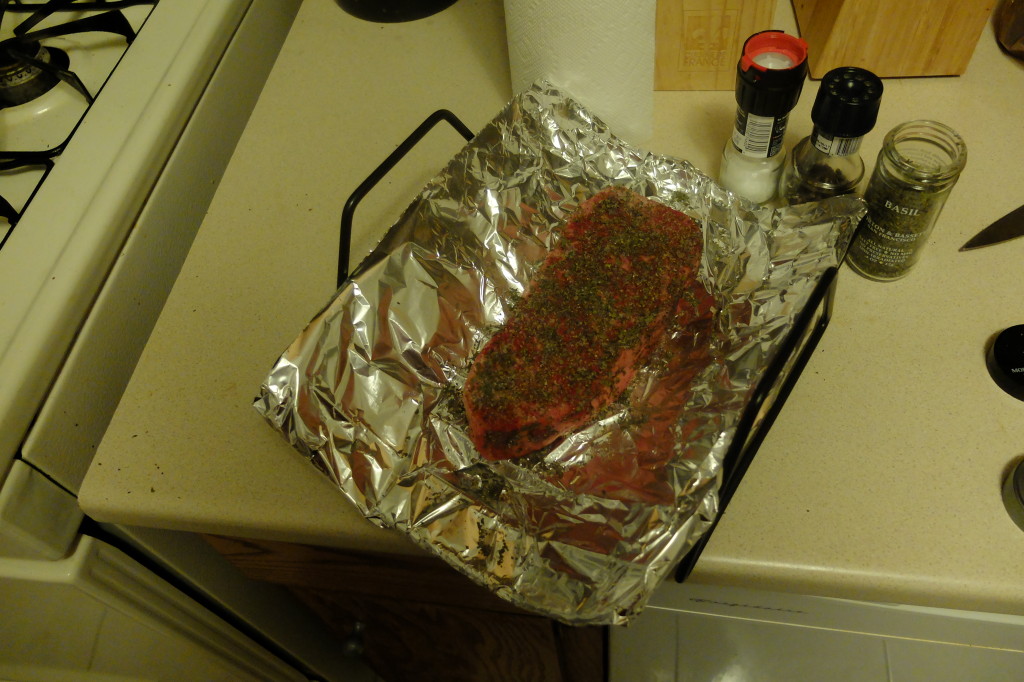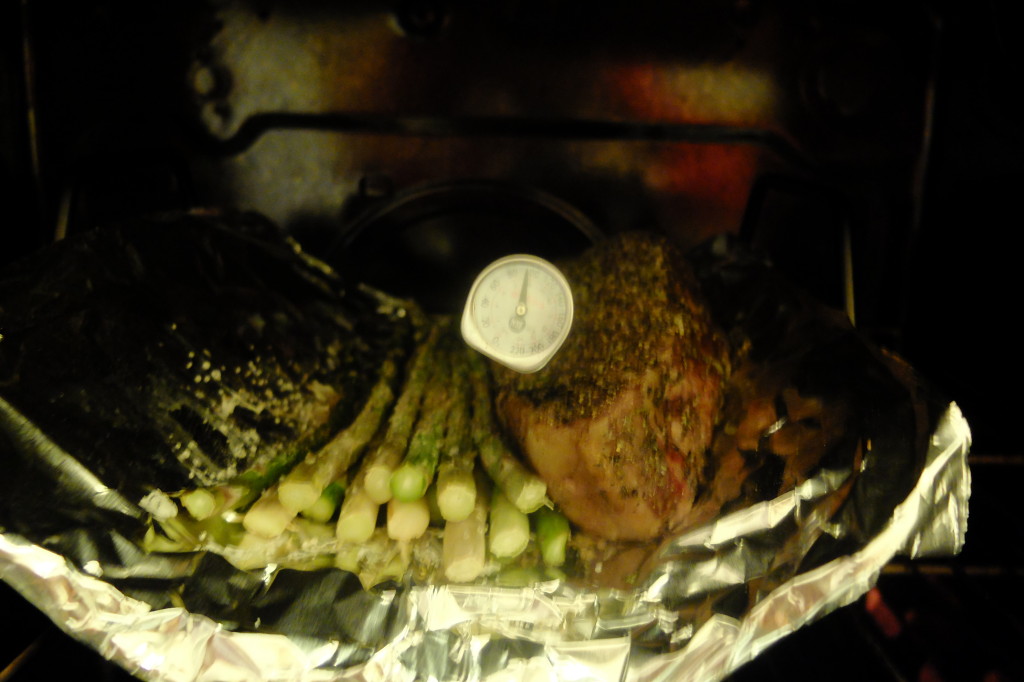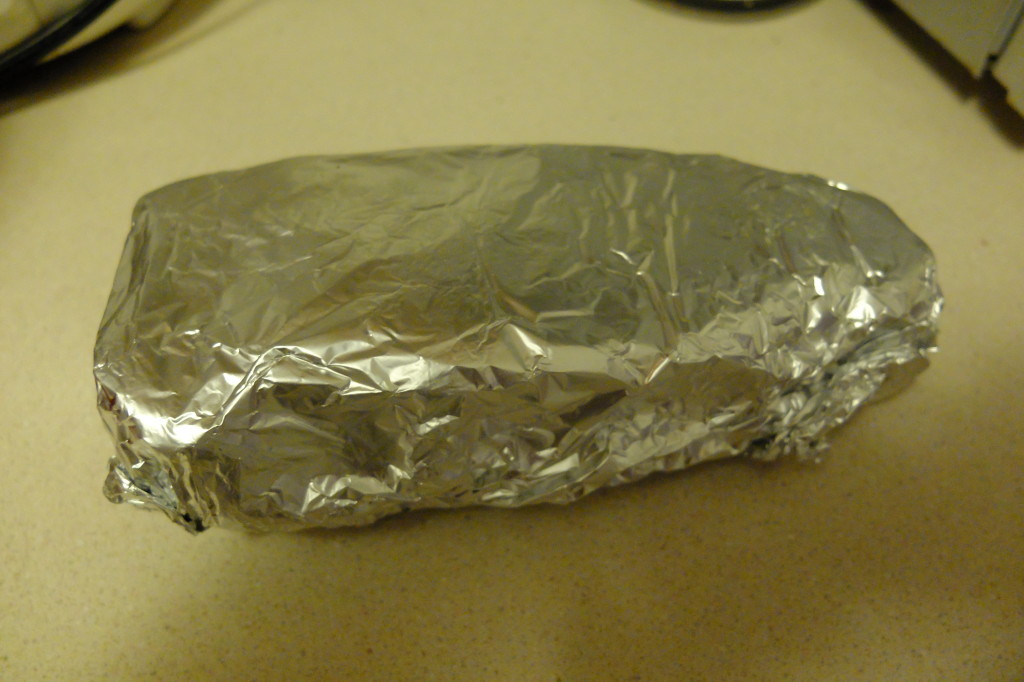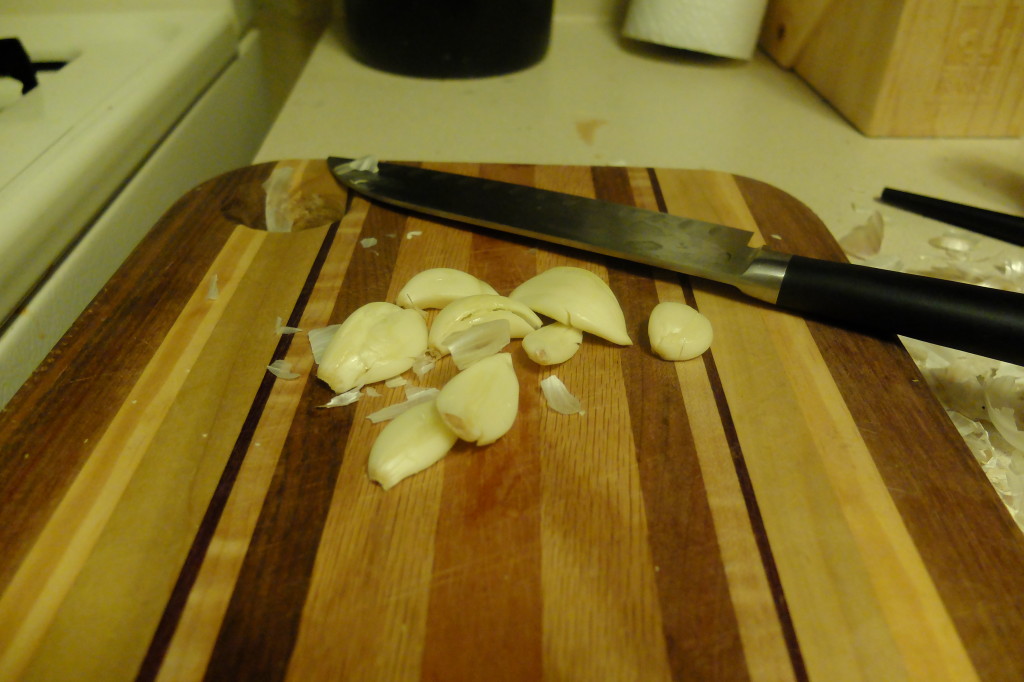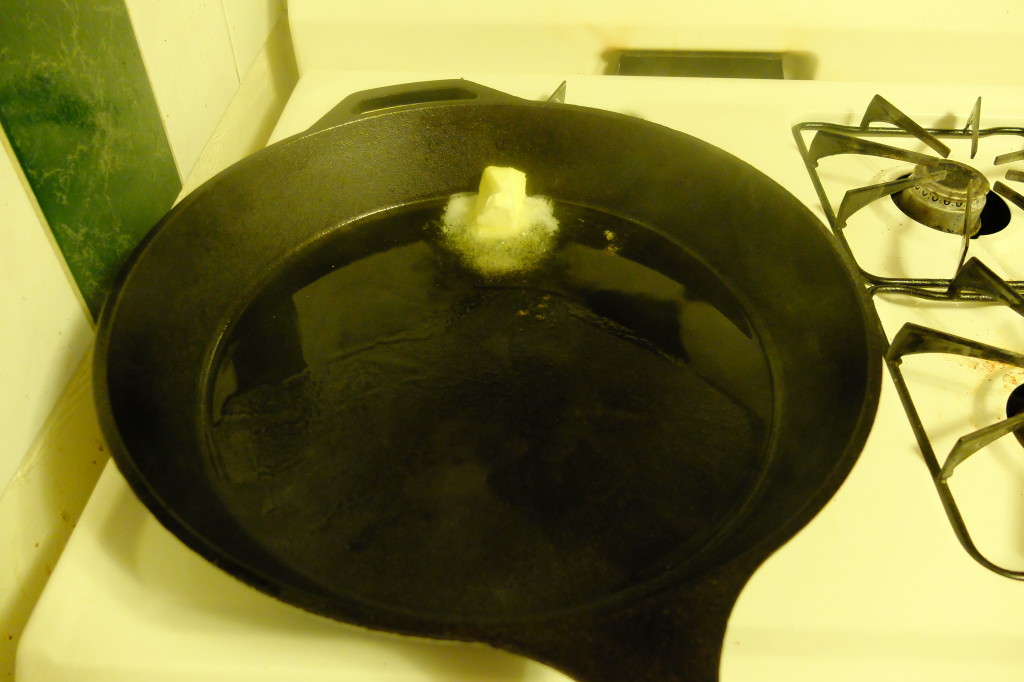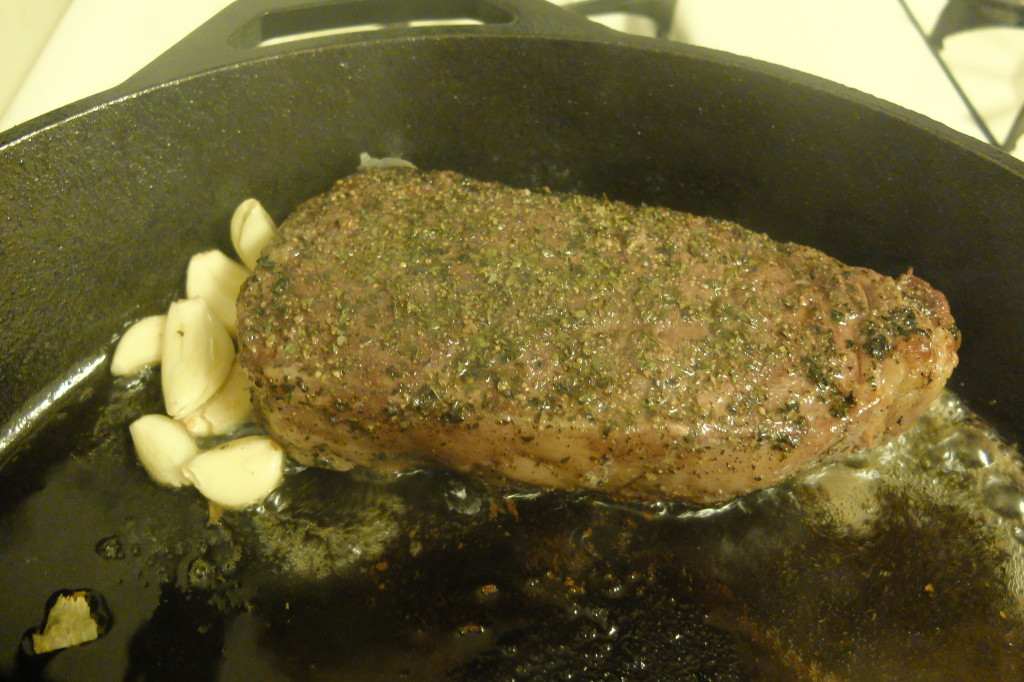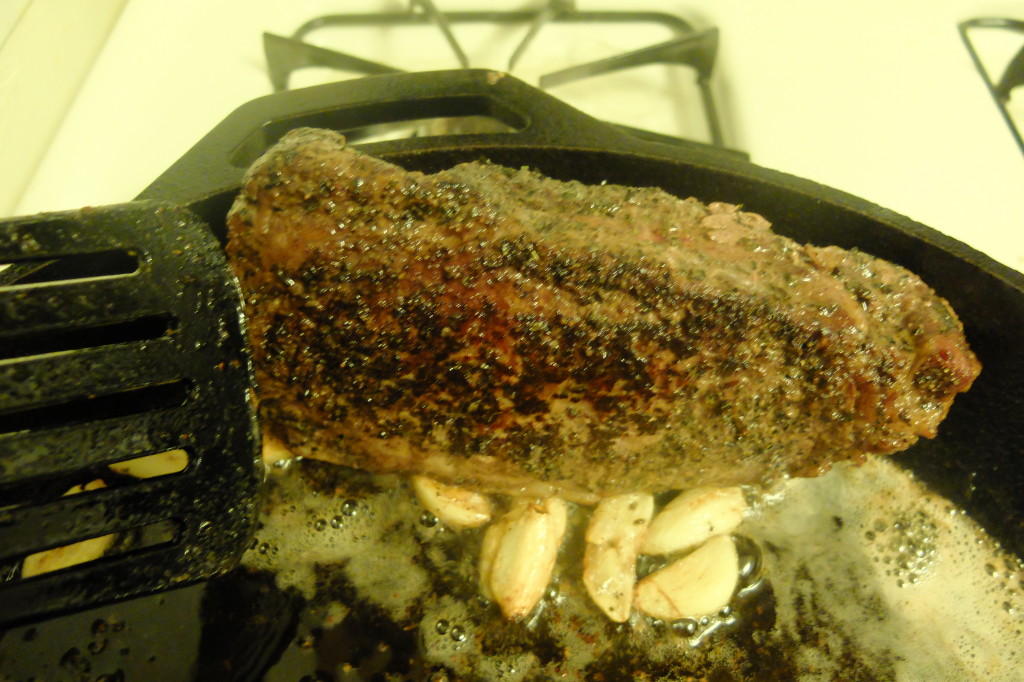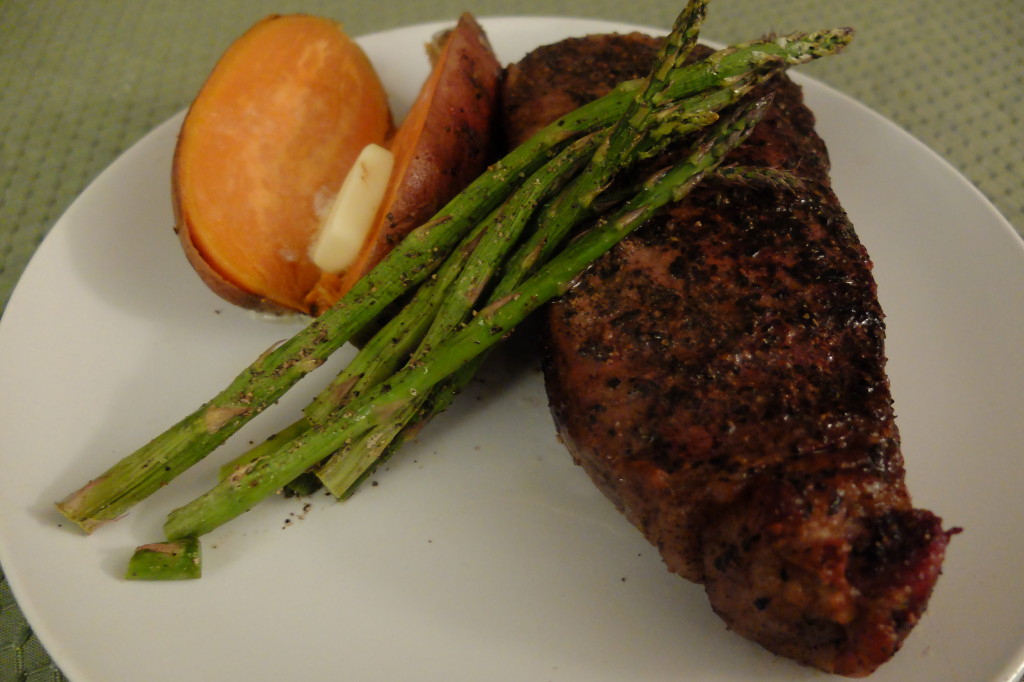* all photos by author, taken with a Fujifilm x20.
I N T R O
The Steak dinner is a versatile meal everyone should have on their menu. Appropriate for the romantic dinner by candle light, or the bachelor’s hearty post-workout meal. It’s usually cooked with a red, slightly rare center to give it maximum flavor. However, most premium strips of steak are very thick. Using the traditional pan seared method on a thick steak will often get you a well-done, even charred surface, with a center that’s completely rare. That’s why I used the “reverse-searing” method of cooking, baking the steak first to evenly cook the center, and then finishing the steak with an intense sear on both sides. This gets you a flavorful center that’s evenly cooked to medium, with a delicious, crispy crust on the outside.
P R E P
Ingredients & Tools:
- A clove of garlic
- half a stick of butter
- nut oil (I used olive oil here, but nut based oils have the highest “smoke point”, which means they don’t break down at high temperatures required for searing.)
- sea salt (use actual sea salt, which enhances flavor, not Morton’s salt, which will just make it very salty)
- basil (optional)
- probe thermometer (which can be purchased at any supermarket)
- aluminum foil
- Steak (at least 2 inches thick)
Steak selection:
Generally ribeyes, t-bones, or top-lions make great steaks. This guide (click) gives a good visual overview of which parts of a cow make good steaks. Supermarkets usually label each meat, which makes finding the right piece of steak pretty easy. This is the piece of steak I got:
C O O K
First, preheat the oven to about 275 degrees. While the oven heats up, let’s season our steak. I generously applied on the salt, pepper, and basil to both sides of the steak, making sure to get the edges as well. Just evenly sprinkle the seasoning on there. Then, place the steak on aluminum foil prior to the oven. I found a random oven rack to put everything on, but you can really place it in any oven-safe tray or pan. When the oven reaches 275, stick the seasoned steak in.
The goal here is to raise the internal temperature of your steak to about 120 – 125 degrees. Depending on the thickness of the steak, this could take anywhere from 25 minutes to an hour. I periodically checked the temperature with my probe thermometer. I also found that the temperature in the steak rose rapidly towards the end of the process, jumping 15 degrees in just 5 minutes. Make sure the probe reaches the center of the steak for an accurate measurement. Do not leave your probe in the oven, only use it when the oven is open.
Once the internal temperature of the steak hits 120 – 125 degrees, I pulled the steak out and wrap it in more aluminum foil. The residual heat will continue to cook the inside of the steak, getting that evenness we want. Leave it be for 15 minutes.
While I impatiently waited, I prepped the rest of the ingredients. Put my cast iron on the stove and turned the heat to high. A well seasoned cast iron pan is perfect for cooking steak. Cast irons are unbeatable at retaining heat, and the seasoning of the pan gives the steak a unique flavor. Heat the pan until its absurdly hot, as in smoke rising from the pan hot. I also crushed the garlic (no need to chop it), so that the flavor can seep into the pan.
Throw butter and olive oil into the now scorching pan.
Then I added the steak and garlic. Let all the flavors just melt into each other… Because the pan is so hot, we only want about 60 – 90 seconds on each side of the steak to get that perfect sear.
Make sure to sear the sides of the steak as well, especially the fat. I love the fat.
After about a minute on each side, our steak is done! Serve immediately and enjoy while warm. I like to pair my steak with asparagus and potatoes. Mushrooms topping the steak is always a welcomed sight as well. Remember, red wine goes with steak!
C O N C L U S I O N & S U M M A R Y
Total cooking time was about an hour. Important to remember: always start with an already thawed steak. Steak that are not properly thawed (usually freezing in the center) will lead to uneven cooking. If you prefer a rarer center or more well-done center, vary the oven time slightly. I got the medium center by raising the internal temperature of the steak to 125 in the oven, so try 115 – 120 if you prefer a medium-rare. Bon apetite!
TL’DR Summary
- preheat oven to 275
- Season steak as desired (e.g. salt, pepper, & basil)
- Leave steak in oven until internal temperature is 120 – 125, remove from oven.
- Wrap steak in foil and let sit for 15 minutes.
- Pre-heat cast iron pan until smoke rises, add olive oil, garlic, and butter
- Sear steak for 60 seconds on each side.
- enjoy!
